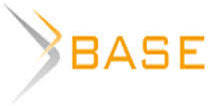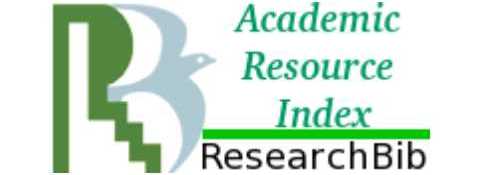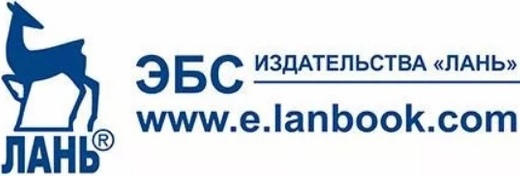Impact of organizational and technological models of the “Factory of the future” production on labor productivity
Throughout the industrial era, one of the most important problems that need to be tackled is the growth of labor productivity, which ensures the growth of production volume and the reduction of costs. At present, the problem of labor productivity growth is not deminishing, especially in Russia. Under heavy burden of sanctions, import dependence in many industries, needs innovative, competitive industrial products in the required volumes. The main methods of researching the problem of labour productivity growth in this paper are comparative, statistical, index. The article discusses the impact of transformations taking place in the material and technical base and labor force, due to the ongoing digital transformation of production and business processes, on one of the important economic indicators – labor productivity. The authors, based on world statistics, reflecting the ratio of GDP growth rates per hour worked by countries, including Russia, and the well-known reasons for the decline in labor productivity in our country, analyze possible ways of its growth. The growth of labor productivity is associated with the choice and implementation of new generation production models, called "Factories of the Future". A brief description of each of these models is given. It is shown that the model of the "Digital Factory" is used in the manufacturing industry of the Russian Federation, gradually introducing its technological tools. The change in digital indicators in recent years and their further possible dynamics, as well as the changes of labor productivity and costs for digital technologies in the manufacturing industry, are demonstrated. The absence of the effect of labor productivity growth in short term was revealed, and the positive impact of digital technologies in long term was substantiated.
Chizhova, E. N., Vladyka, M. V., Balabanova, G. G. (2023), “Impact of organizational and technological models of the “Factory of the future” production on labor productivity”, Research Result. Business and Service Technologies, 9 (3), pp. 53-64, DOI: 10.18413/2408-9346-2023-9-3-0-4
















While nobody left any comments to this publication.
You can be first.
Action plan ("road map") "TEHNET" (advanced production technologies) of the National Technology Initiative, [Online], available at: https://assets.fea.ru/uploads/fea/news/2021/06/24/2021_0624_DK_Technet.pdf(Accessed 14 June 2023).
Akaev, A.A. and Sadovnichiy, V.A. (2021), “The human factor as a determinant of labor productivity in the era of the digital economy”, Problems of Forecasting, 1, pp. 45-58.
Balabanova, G.G and Chizhova, E.N. (2022), “Approaches to understanding labor productivity and factors affecting its growth”, Bulletin of the Altai Academy of Economics and Law, 10 (part 2), pp.221-228.
Digital Economy: 2023, Data Book, National Research University Higher School of Economics, Moscow, HSE, 2023, 120 p. [Online], available at: https://issek.hse.ru/mirror/pubs/share/802513326.pdf (Accessed 15 June 2023).
Digital Economy Indicators in the Russian Federation: 2022, Data Book, National Research University Higher School of Economics, Moscow, HSE, 2023, 332 p. [Online], available at: https://issek.hse.ru/mirror/pubs/share/780810055.pdf (Accessed 19 June 2023).
Digital Economy Indicators in the Russian Federation: 2021, Data Book, National Research University Higher School of Economics, Moscow, HSE, 2022, 380 p. [Online], available at: https://issek.hse.ru/mirror/pubs/share/484533334.pdf (Accessed 19 June 2023).
Digital transformation: expectations and reality: report. to the XXIII Yasinsk (April) int. scientific conf. on the problems of development of the economy and society, (2022), Moscow, National research University "Higher School of Economics", M., Ed. House of the Higher School of Economics, 221 p.
Expert opinion. Examples of the most successful digital production projects in Russia, [Online], available at: https://up-pro.ru/library/information_systems/automation_production/primery-russia/ (Accessed 15 June 2023).
Gross value added at basic prices according to the 2008 SNA (OKVED) methodology, [Online], available at: https://www.fedstat.ru/indicator/58250 (Accessed 15 June 2023).
Growth in GDP per capita, productivity and ULC. GDP per hour worked capita and labour productivity, [Online], available at: https://stats.oecd.org/index.aspx?queryid=54563 (Accessed 08 June 2023).
Kapustina, L.M. and Kondratenko, Yu.N. (2020), “On the issue of the concept of “smart enterprise” in the digital economy”, Management Issues, 4, pp. 33-43.
Metlyakhin, A.I., Nikitina, N.A., Yarygina, L.V. and Orlova, E.O. (2020), “Analysis of the impact of digitalization of the economy on labor productivity in Russia”, St. Petersburg State Polytechnical University Journal. Economic sciences, V. 13, 2. рр. 7-17.
Nechaev, A.V. (2021). “Economy digitalization: impact on workforce productivity in Russia”, Current issues of accounting and management of the information economy, 3, pp. 439-446.
Nevolin, I. (2018), “Factors for the development of the Factories of the Future”, Digital economy, 4, pp. 51-56.
Platonov, V. (2007), “The Solow Paradox" twenty years later, or about the study of the impact of innovations in information technology on productivity growth”, Finance and business, 3, pp. 28-38, [Online], available at: https://www.researchgate.net/publication/283120030 (Accessed 17 June 2023).
Porokhovskiy, А. А. (2019), “Digitalization and labor productivity”, USA& Canada: Economics – Politics – Culture, 8, pp. 5-24, [Online], available at: https://usacanada.jes.su/s032120680005964-4-1/. (Accessed 08 June 2023).
The Higher School of Economics assessed the Russian Digitalization Index, [Online], available at: https://www.comnews.ru/content/222673/2022-10-19/2022-w42/niu-vshe-ocenil-indeks-cifrovizacii-rossii (Accessed 16 June 2023).
Vasilkovskiy, S. A., Kovaleva, G. G., Abdrakhmanova, G. I. and Vishnevsky, K. O. [et al]. The index of digitalization of sectors of the economy and the social sphere, [Online], available at: https://issek.hse.ru/news/783750202.html (Accessed 16 June 2023).